Looking for a dog breed that defies convention and stands out from the crowd? Have you ever wondered what it would be like to have a four-legged companion with six toes on each foot and remarkable climbing abilities? If so, the Norwegian Lundehund might just be the breed you've been searching for.
This unique and versatile dog has a host of fascinating characteristics that make it a breed like no other. From their exceptional grip and agility on rocky terrain to their incredibly flexible joints, the Lundehund is a true marvel of nature. But that's just the beginning.
To uncover the full extent of this breed's extraordinary traits and explore their personality, health, care, feeding, and coat, you'll have to keep reading. Trust us, it's worth it.
Key Takeaways
- Norwegian Lundehunds are a unique breed with six toes on each foot and exceptional agility on rocky terrain.
- They are independent and somewhat reserved with strangers, but loyal and affectionate with their families.
- When choosing a Lundehund, prioritize adopting from rescue organizations or finding a reputable breeder who prioritizes health and temperament.
- Lundehunds adapt well to apartment living, but energy levels and exercise requirements should be considered.
Origin of Norwegian Lundehund
The Norwegian Lundehund has a fascinating origin story, hailing from Norway and boasting unique characteristics that set it apart from other dog breeds.
This breed was originally developed to hunt puffins, which are seabirds found along the Norwegian coast.
The Lundehund's six toes on each foot and exceptional grip and agility on rocky terrain made it the perfect hunting companion for navigating the steep cliffs and narrow crevices where puffins nested.
Additionally, its incredibly flexible joints allowed it to squeeze into tight spaces and retrieve the birds.
Over time, the Lundehund's distinctive traits were refined through selective breeding, resulting in a breed that's independent, alert, somewhat reserved with strangers, and loyal and affectionate with their families.
Today, the Norwegian Lundehund is cherished for its rich history and remarkable abilities.
Size and Breed Group

After learning about the fascinating origin of the Norwegian Lundehund, it's now time to explore its size and breed group.
The Norwegian Lundehund is classified as a small to medium-sized dog. In terms of breed group, it belongs to the Spitz group. This breed group is known for its distinctive characteristics, such as a thick double coat, erect ears, and a curled tail that rests on the back.
The Norwegian Lundehund shares these traits with other Spitz breeds, which include the Alaskan Malamute, Siberian Husky, and Samoyed. Despite its small to medium size, the Norwegian Lundehund is a sturdy and agile dog, thanks to its flexible joints and exceptional grip.
This makes them well-suited for navigating rocky terrains and climbing.
Lifespan of Norwegian Lundehund
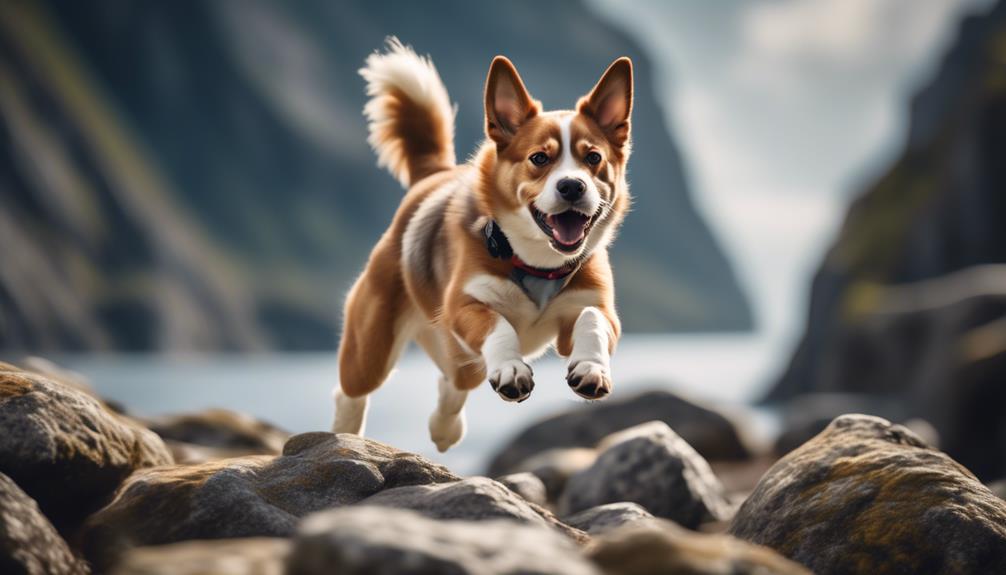
When considering the lifespan of a Norwegian Lundehund, it's important to note that they typically live for 12-15 years.
Here are three factors that can influence the lifespan of a Norwegian Lundehund:
- Genetic Health: Like any breed, the health of the Norwegian Lundehund plays a significant role in determining their lifespan. Responsible breeders prioritize health screenings to reduce the risk of inherited diseases such as hip dysplasia, eye problems, Lundehund syndrome, patellar luxation, and Von Willebrand's disease.
- Diet and Exercise: Proper nutrition and regular exercise are crucial for the overall health and longevity of a Norwegian Lundehund. A balanced diet, based on their age, size, and activity level, along with adequate exercise to keep them mentally and physically stimulated, can contribute to a longer lifespan.
- Veterinary Care: Regular veterinary check-ups, vaccinations, and preventive care are essential for maintaining the health of a Norwegian Lundehund. Early detection and treatment of any health issues can significantly impact their lifespan by preventing the progression of diseases.
Coat Characteristics
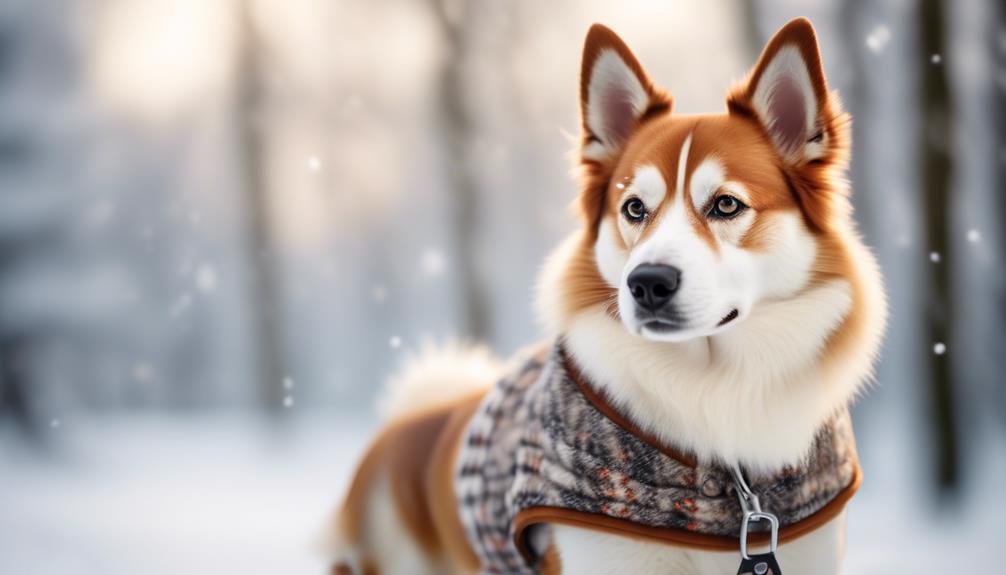
To understand the coat characteristics of the Norwegian Lundehund, it's important to note their dense and rough coat. The Lundehund has a double coat, consisting of a harsh outer coat and a dense, soft undercoat.
The outer coat is weather-resistant and helps protect the dog from harsh environments. It's dense and rough to the touch, providing insulation and keeping the dog warm in cold weather.
The undercoat is soft and provides additional insulation. This combination of coats helps the Lundehund adapt to different weather conditions.
However, it's important to note that the Lundehund is a heavy shedder and requires regular brushing to remove loose hair and maintain the health and appearance of the coat.
Unique Traits of Norwegian Lundehund
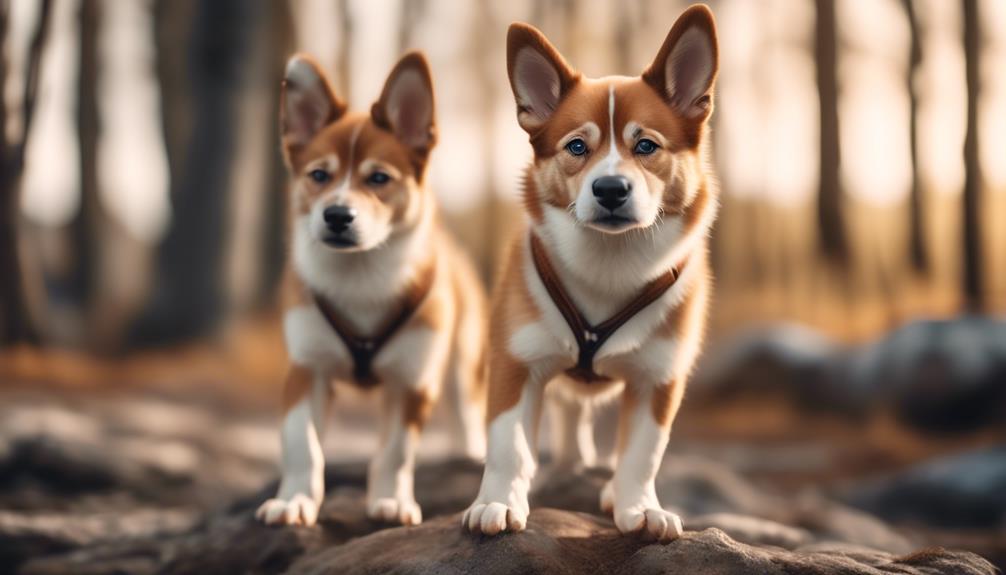
The Norwegian Lundehund's unique traits set it apart from other breeds, making it a fascinating and one-of-a-kind companion. Here are three distinctive characteristics that make the Norwegian Lundehund truly remarkable:
- Six Toes on Each Foot: Unlike most dogs that have five toes on their front feet and four on their back, the Norwegian Lundehund has an extra toe on each foot. This allows them to have an exceptional grip on rocky terrains and provides them with added stability and agility.
- Exceptional Flexibility: The Norwegian Lundehund is incredibly flexible, thanks to its unique joints. They can bend their necks backward to touch their spines, rotate their front legs to a 90-degree angle, and even tip their heads backward. This flexibility enables them to navigate narrow spaces and squeeze through small openings.
- Independent and Alert Nature: Norwegian Lundehunds are known for their independent and alert nature. They're somewhat reserved with strangers but are loyal and affectionate with their families. Their alertness makes them excellent watchdogs, always ready to notify their owners of any potential dangers.
These distinctive traits make the Norwegian Lundehund a truly fascinating and extraordinary breed.
Considerations for Choosing a Norwegian Lundehund
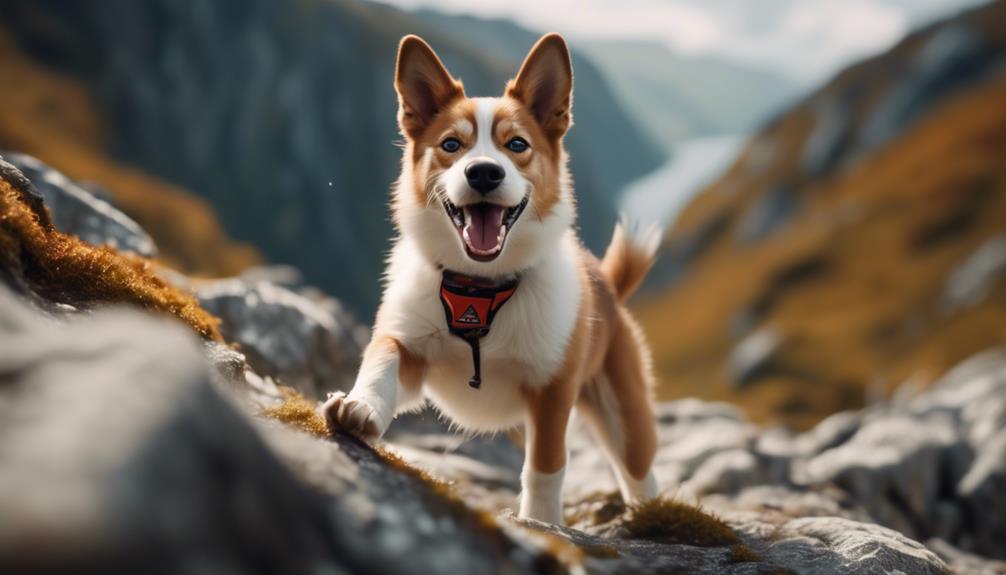
Before making the decision to bring a Norwegian Lundehund into your home, there are important considerations to keep in mind.
First, prioritize adopting from rescue organizations or shelters. If you decide to go with a breeder, conduct thorough research to find a reputable one who prioritizes health and temperament. Reputable breeders will also conduct necessary health screenings.
It's important to provide a nurturing environment for puppies, as they require extra care and attention.
When it comes to apartment living, Norwegian Lundehunds adapt well, but size alone shouldn't be the sole determinant. Consider energy levels and space requirements, and prioritize qualities such as being quiet and low-energy to create a harmonious living environment for both your dog and neighbors.
Importance of Adopting From Rescue Organizations
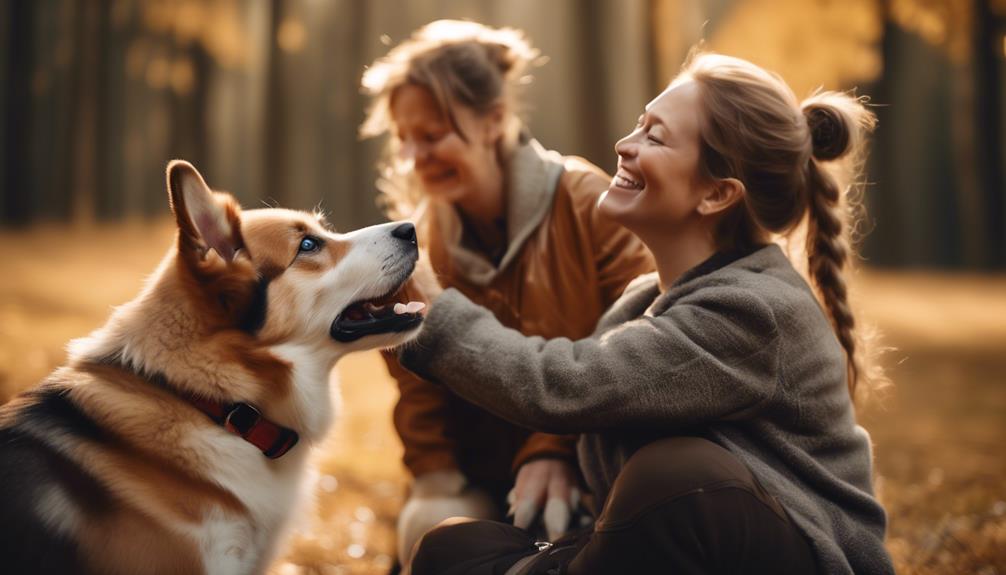
Consider adopting from rescue organizations to give a Norwegian Lundehund a chance at a loving home. By choosing to adopt from a rescue organization, you're making a difference in the life of a dog in need.
Here are three reasons why adopting from rescue organizations is important:
- Saving a life: When you adopt from a rescue organization, you're giving a Norwegian Lundehund a second chance at life. These organizations rescue dogs from various situations, including neglect, abuse, and abandonment. By adopting, you're providing a safe and caring environment for a dog that may have otherwise been euthanized.
- Promoting responsible pet ownership: Rescue organizations often prioritize the health and well-being of the dogs they rescue. They provide necessary medical care, vaccinations, and spaying/neutering. By adopting from a rescue organization, you're supporting responsible pet ownership and helping to reduce the number of homeless animals.
- Finding the perfect match: Rescue organizations work hard to match dogs with suitable families. They assess the dogs' temperaments, energy levels, and compatibility with different households. By adopting from a rescue organization, you have a better chance of finding a Norwegian Lundehund that fits well with your lifestyle and preferences.
Finding a Reputable Breeder
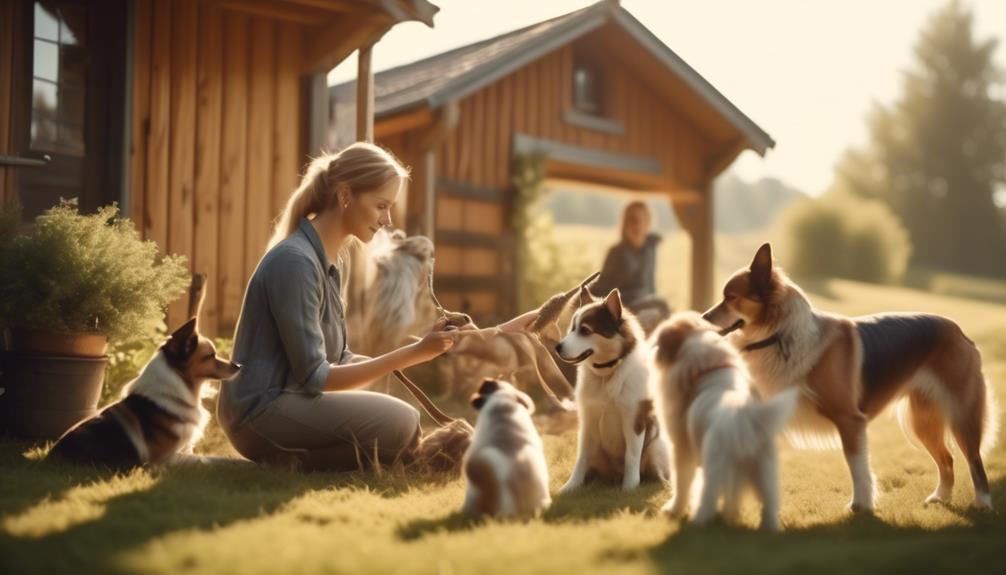
When searching for a reputable breeder for a Norwegian Lundehund, it is important to prioritize health and temperament. A reputable breeder will prioritize the well-being of their dogs and conduct necessary health screenings to ensure the puppies are healthy. They will also provide a nurturing environment for the puppies, ensuring they are well-socialized and raised in a loving home. To help you find a reputable breeder, consider the following factors:
| Factor | Importance | Questions to Ask |
|---|---|---|
| Health Testing | High | Have the parents been tested for any breed-specific health issues? |
| Puppy Socialization | High | How are the puppies socialized and exposed to different stimuli? |
| Breeding Goals | Medium | What are the breeder's goals in terms of temperament, structure, and working ability? |
| Breeder Support | Medium | What kind of support does the breeder provide after you bring your puppy home? |
Factors to Consider for Apartment Living
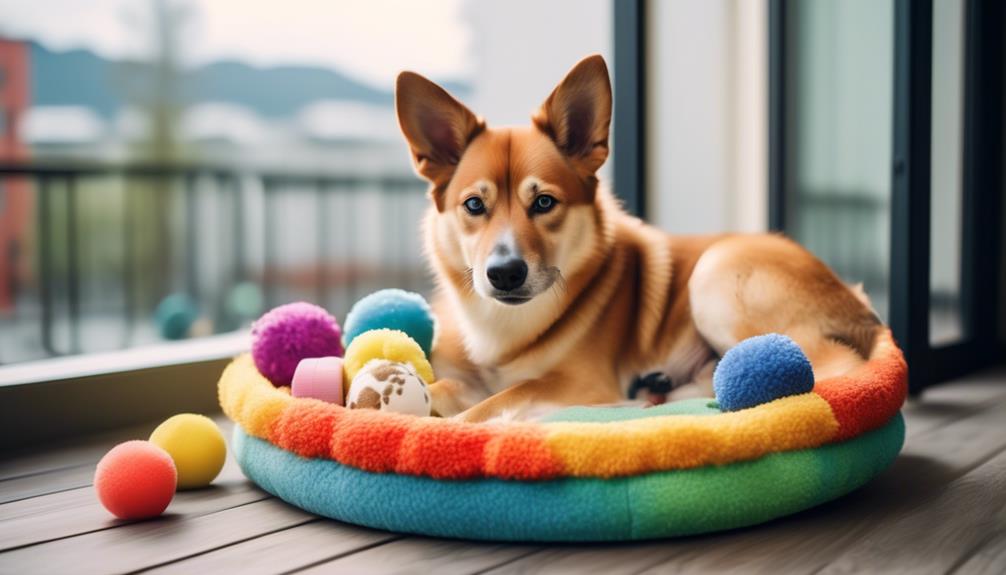
Now let's shift our focus to the important factors you should keep in mind when living in an apartment with a Norwegian Lundehund.
- Size isn't the only consideration: While Norwegian Lundehunds are small to medium-sized dogs, size alone shouldn't determine whether they're suitable for apartment living. Instead, consider their energy levels and space requirements. Prioritize qualities such as being quiet and low-energy to ensure a harmonious living environment for both you and your neighbors.
- Adaptability to apartment living: Norwegian Lundehunds are known to adapt well to apartment living. They're independent and can entertain themselves for short periods. However, it's still important to provide them with regular exercise and mental stimulation to prevent behavioral issues and weight gain.
- Consider your neighbors: When choosing a dog for apartment living, it's crucial to consider noise restrictions and the proximity to your neighbors. Norwegian Lundehunds are generally not excessive barkers, but it's still important to be mindful of your neighbors' comfort and create a peaceful living environment for everyone.
Adaptability of Norwegian Lundehund in Apartments
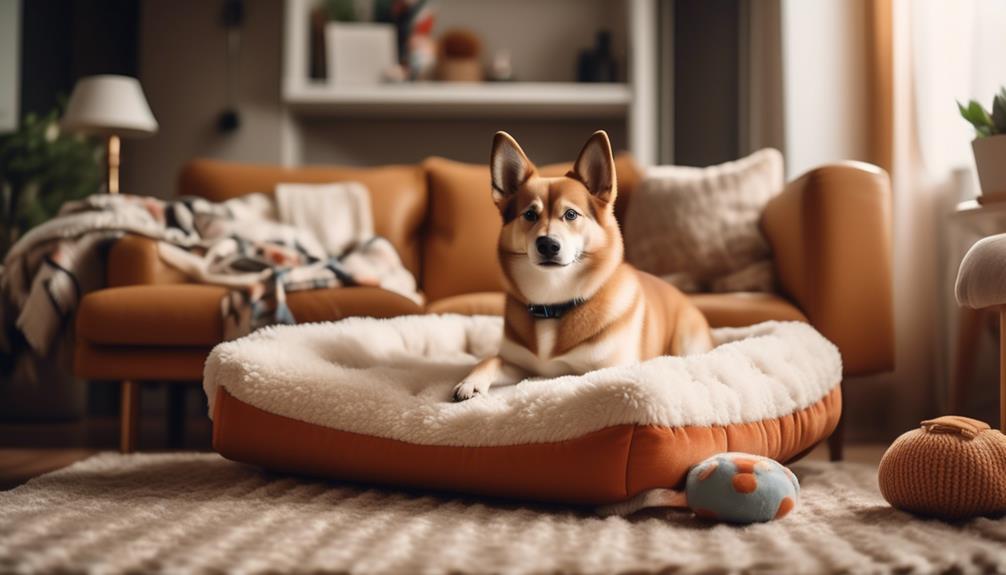
Living in an apartment, you'll find that the Norwegian Lundehund's adaptability is a valuable quality. Despite their small to medium size, Lundehunds are well-suited for apartment living. Size alone shouldn't be the only factor when considering a dog for an apartment. Instead, focus on their energy levels and space requirements.
Lundehunds are quiet and low-energy, making them a great choice for apartment dwellers. It's important to consider the comfort of your neighbors and create a harmonious living environment. With their calm and relaxed demeanor, Lundehunds will fit right into apartment life.
Behavioral Characteristics of Norwegian Lundehund
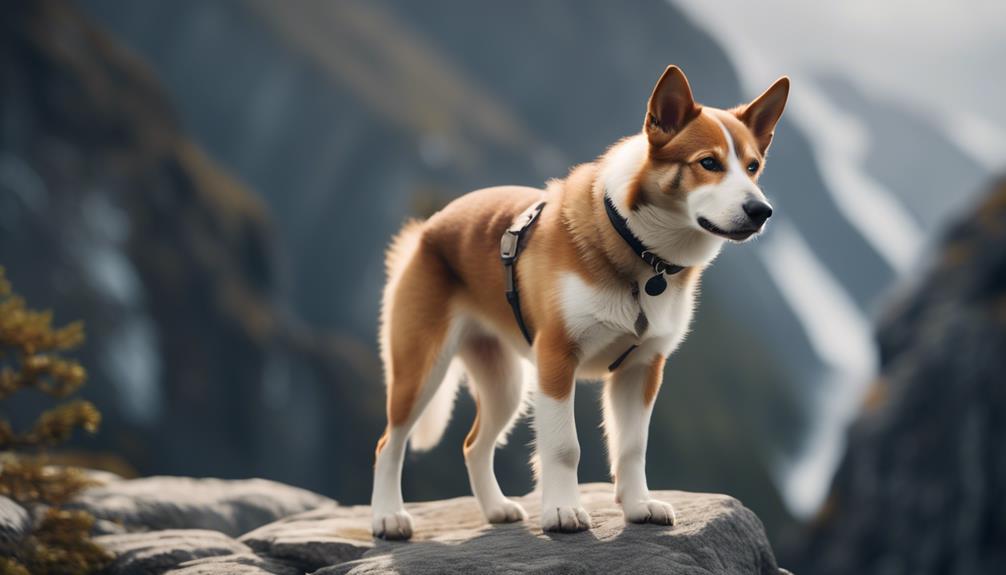
Norwegian Lundehunds exhibit unique behavioral characteristics that make them stand out among other dog breeds. Here are three key traits that define their behavior:
- Alertness: Lundehunds are highly alert and attentive. They have a natural instinct to be aware of their surroundings, making them excellent watchdogs. Their alertness also contributes to their ability to navigate rocky terrains and narrow spaces with exceptional agility.
- Independence: Lundehunds have a strong independent streak. They are known to be self-reliant and may not seek constant attention or affection. This independence can make them a good choice for individuals who prefer a more autonomous pet.
- Loyalty: Despite their independent nature, Lundehunds are incredibly loyal to their families. They form strong bonds and are devoted to their loved ones. This loyalty makes them protective and can create a deep and meaningful connection between the dog and their owner.
Exercise Needs of Norwegian Lundehund
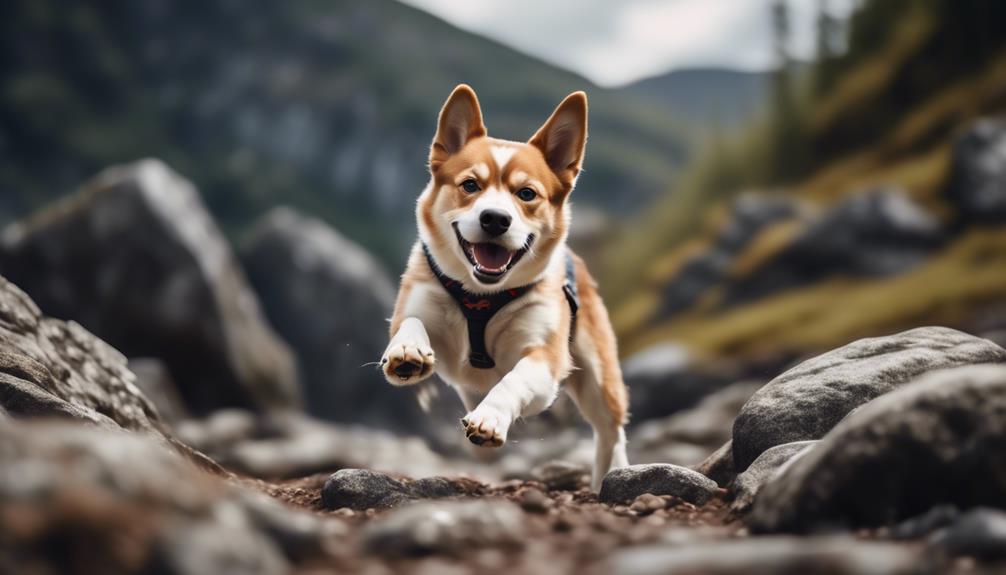
After understanding the unique behavioral characteristics of the Norwegian Lundehund, it is important to address their exercise needs. Norwegian Lundehunds are high-energy dogs that require significant exercise and mental stimulation to stay happy and healthy. Lack of exercise can lead to weight gain and behavioral issues. They have a playful nature and are always ready for a game. This playfulness requires more attention and interaction from their owners. To give you a better idea of their exercise needs, here is a table outlining the recommended exercise for Norwegian Lundehunds:
| Exercise Level | Exercise Type | Duration |
|---|---|---|
| High | Daily walks | 30-60 minutes |
| Interactive playtime | 15-30 minutes | |
| Mental stimulation | Puzzle toys or training |
Playfulness of Norwegian Lundehund
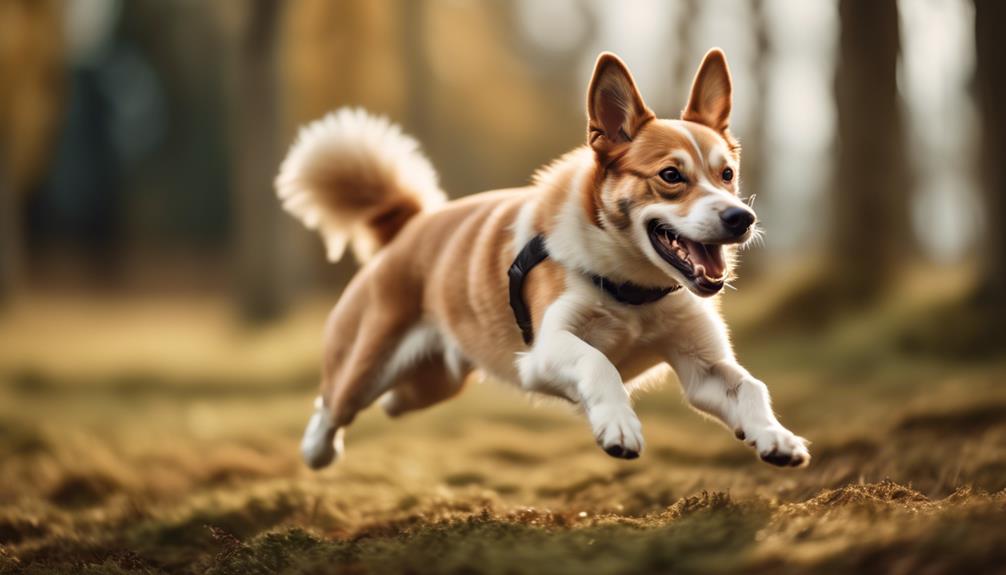
To truly appreciate the Norwegian Lundehund's playful nature, you'll need to engage in plenty of interactive games and activities. This breed loves to have fun and is always ready for a game. Here are three ways to tap into their playfulness:
- Puzzle toys: Norwegian Lundehunds are intelligent dogs that enjoy mental stimulation. Use puzzle toys to challenge their problem-solving skills and keep them entertained for hours.
- Agility training: This breed is known for its exceptional grip and agility on rocky terrain. Set up an agility course in your backyard or join a local agility class to provide physical exercise and mental stimulation.
- Fetch: The Norwegian Lundehund has a strong retrieving instinct. Playing fetch won't only satisfy their need for physical activity but also strengthen the bond between you and your furry friend.
Overview of Norwegian Lundehund: Personality, Health, Care, Feeding, and Coat
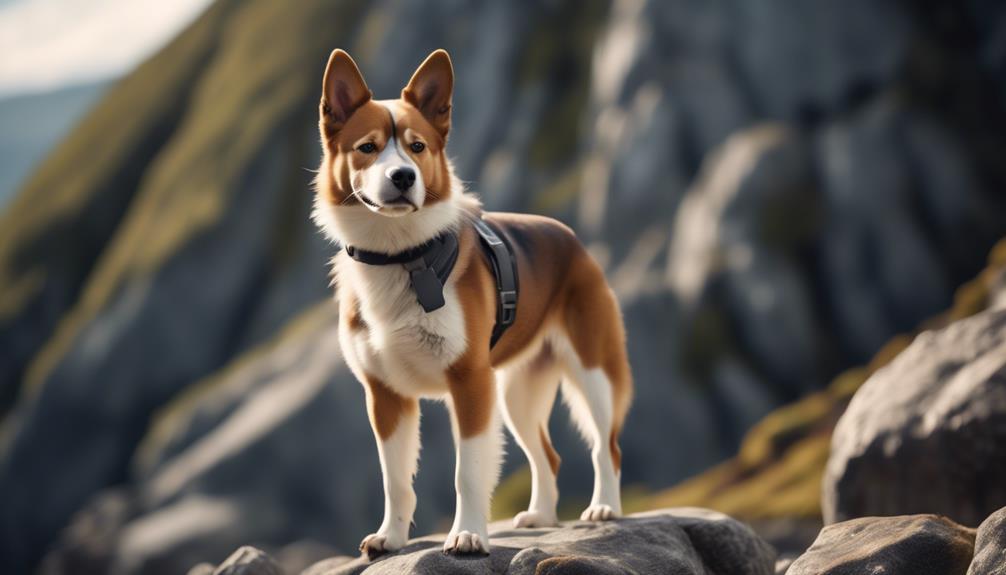
When considering a Norwegian Lundehund, it's important to understand their personality, health needs, care requirements, feeding habits, and coat maintenance.
Norwegian Lundehunds are known for their alertness, activity, devotion, and protectiveness. They have a tendency to bark and dig, which can be managed through early socialization and positive reinforcement training.
In terms of health, Lundehunds are prone to hip dysplasia, eye problems, Lundehund syndrome, patellar luxation, and Von Willebrands disease.
Care for a Lundehund includes choosing high-quality dog food based on their age, size, and activity level. It is also important to maintain a consistent feeding schedule with two meals a day for adults.
Their dense and rough coat requires regular grooming, as Lundehunds are heavy shedders. Regular brushing is necessary to keep their coat in good condition.
Frequently Asked Questions
Are Norwegian Lundehunds Good With Children and Other Pets?
Yes, Norwegian Lundehunds can be good with children and other pets. However, it's important to supervise interactions and provide proper socialization. Always consider the individual dog's temperament and exercise caution when introducing them to new situations.
How Much Exercise Does a Norwegian Lundehund Need Daily?
A Norwegian Lundehund needs a moderate amount of exercise each day. They are an active breed that thrives on physical activity. Aim for at least 30-60 minutes of exercise, such as walks or playtime, to keep them happy and healthy.
Do Norwegian Lundehunds Have Any Specific Dietary Requirements?
No, Norwegian Lundehunds do not have any specific dietary requirements. However, it is important to choose high-quality dog food based on their age, size, and activity level for optimal health and well-being.
How Often Should a Norwegian Lundehund Be Groomed?
A Norwegian Lundehund should be groomed regularly to maintain their dense and rough coat. Regular brushing is necessary, as they are heavy shedders. Aim for consistency in grooming to keep their coat in good condition.
Are Norwegian Lundehunds Prone to Any Specific Health Issues?
Yes, Norwegian Lundehunds are prone to specific health issues. These include hip dysplasia, eye problems, Lundehund syndrome, patellar luxation, and Von Willebrands disease. Regular veterinary check-ups are important to monitor and address these potential health concerns.
What Are the Similarities and Differences Between Norwegian Lundehund and Icelandic Sheepdog Breed Characteristics?
The Norwegian Lundehund and Icelandic Sheepdog breed characteristics both exhibit high energy levels and intelligence. However, the Norwegian Lundehund is known for its unique double-jointed toes, allowing it to climb steep cliffs, while the Icelandic Sheepdog breed characteristics include a thick, weatherproof double coat suited for Iceland’s harsh climate.
Conclusion
In conclusion, the Norwegian Lundehund is a unique and versatile dog breed that's well-suited for apartment living. With their extraordinary traits like six toes on each foot and flexible joints, they're excellent climbers and explorers.
They've a playful and energetic personality, and their exercise needs can be easily met in an apartment setting. With proper care, feeding, and training, the Norwegian Lundehund can make a wonderful companion for those looking for a special and adaptable dog breed.




